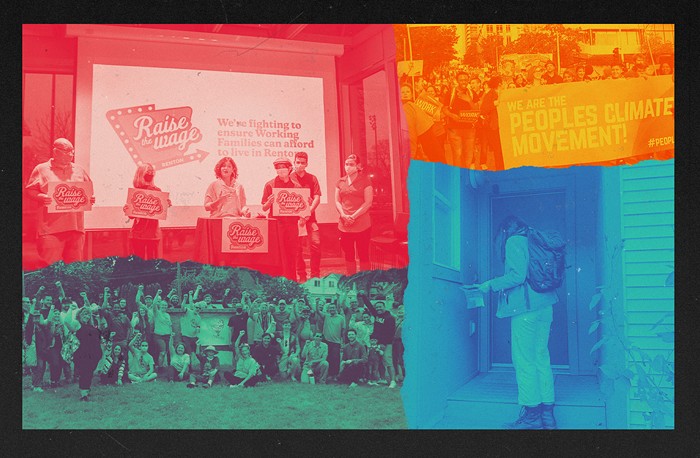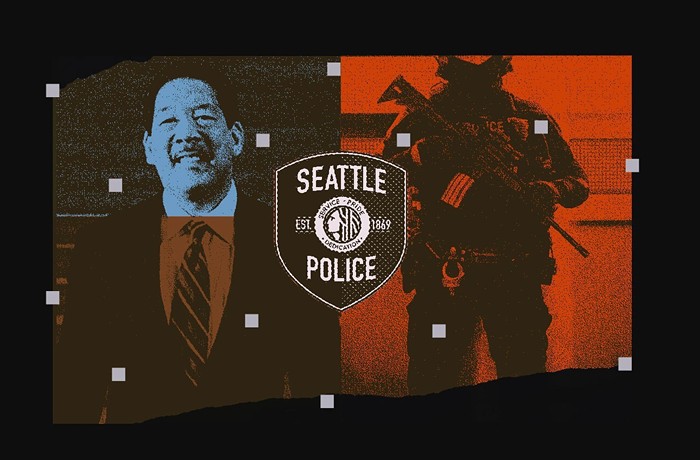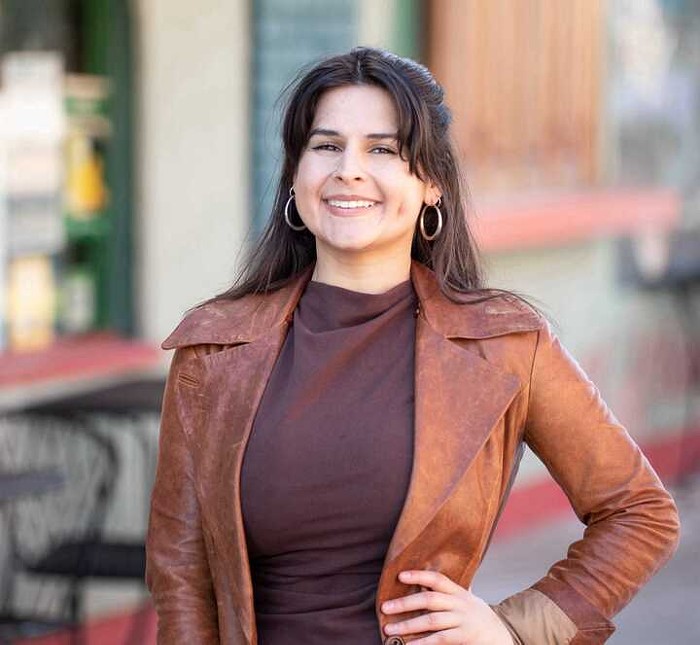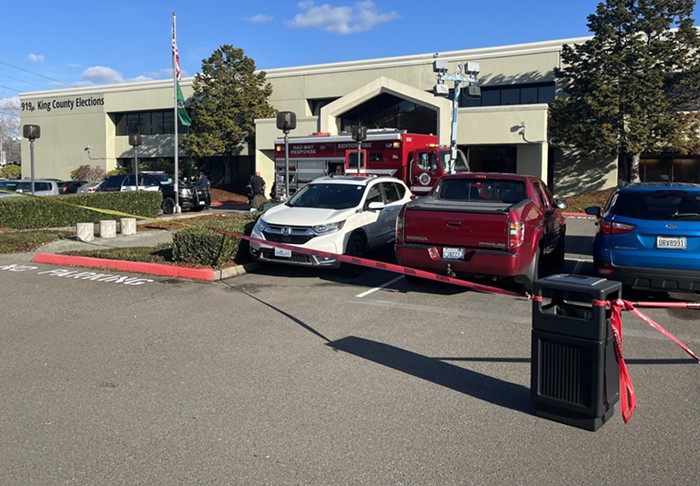
This week, at the direction Mayor Ed Murray, Seattle police rounded up and arrested more than 100 suspected "drug dealers and thieves" in downtown, as part of what the mayor calls a "9½ Block Strategy" to decrease crime in the downtown corridor.
Flanked by US Attorney Annette Hayes, King County Prosecutor Dan Satterberg, FBI agent Frank Montoya Jr., and police chief Kathleen O'Toole at a press conference on Thursday, Murray stressed that this isn't an attempt to arrest away the problem. "This is an attempt," he said, "to use best practices."
"This joint effort," proclaimed Craig Sims, representing Seattle City Attorney Pete Holmes, "should not be seen as political maneuvering or a return to the wasteful and counterproductive war on drugs."
But so far, the enlightened rhetoric doesn't match the numbers.
For one thing, downtown doesn't suffer from the most crime. The police offensive in downtown is a direct response to years of intense lobbying by influential business leaders, including the Downtown Seattle Association (DSA), which backed Murray as a mayoral candidate. In 2013, Murray campaigned on addressing a trumped up "public safety crisis" in the area. Once mayor, he hired the DSA's former president, Kate Joncas, as his deputy mayor.
Crackdowns on low-level crime in downtown are flashy and reassuring to some, but they're not necessarily useful. As Murray's campaign drew to a close in the fall of 2013, the Seattle Times reported that an undercover police operation resulted in at least 27 arrests of drug dealers and criminals near Westlake Center. "It feels safer," the Times reported. "The regular dealers and open-air drug sales were largely gone."
Predictably, those dealers returned. Or others took their place. This week, Murray and others talked about combating a flourishing "open-air drug market" centered around the area. O'Toole said the 1500 block of Pine was a hotspot that generates hundreds of 911 calls.
Here's something that's proven to help: A study from University of Washington released this month shows that the Law Enforcement Assisted Diversion Program (LEAD) has dramatically reduced recidivism among low-level criminals, drug addicts and dealers (often they are both at once) in Belltown, through one-on-one case management and provision of social services. By-the-books sweeps and arrests have accomplished little, according to Belltown Community Council president Liz Campbell. Murray pledged to expand the program to other parts of Seattle, without committing to specific goals or levels of city funding.
"We never like seeing a lot of arrests for low-level drug offenses," said ACLU Washington spokesperson Doug Honig. "These should be treated as a public health problem. The ACLU will be watching 9½ Blocks to see how the program is really being enforced. We hope that it is used to expand the promising approach of the LEAD program."
So, is LEAD being utilized in this new offensive against downtown crime? "As many people as eligible will be diverted to LEAD," promised SPD spokesman Sean Whitcomb in an interview on Thursday. "Lock 'em up is a last resort. Diversion is the first and best opportunity."
Not yet. We're at least 100 arrests in to this operation, and so far, according to Lisa Daugaard, the pioneering lawyer who developed LEAD, none of them have been referred to the program. "We'll be working with the police and prosecutors to figure out how this can be rectified," she said. "The stated approach of using diversion wherever possible is welcome, but there seem to be some operational barriers that are getting in the way of that happening."
Those operational barriers include the fact that the Major Crimes Task Force, which is not trained to use LEAD, is leading the downtown operation—not West Precinct officers who've been using LEAD to great effect.
Upon further questioning, Whitcomb explained that those being arrested are being booked directly into jail. That's not how LEAD has worked. In Belltown, officers were authorized to make referrals directly to LEAD case managers without sending people to jail. When it comes to downtown, however, the decision to divert people to LEAD is being made post-jailing, by prosecutors.
Whitcomb argued this change doesn't undermine LEAD's intent or effectiveness. In an operation of this kind, he said, police need to physically remove the people they're targeting from the street by jailing them for an interim period.
What's ironic is that it was Daugaard's legal motions, in the early 2000s, accusing SPD of disproportionately targeting people of color in its drug enforcement efforts, that led to the creation of LEAD as a compromise path forward. As the Huffington Post noted in a feature story about LEAD:
In Seattle, a city where less than a tenth of the population is black, African-Americans made up nearly two-thirds of the suspects who were arrested for drug crimes that year, despite evidence from Daugaard's organization and the American Civil Liberties Union showing that they were no more likely to use or sell drugs than anyone else.
In 2011, the US Department of Justice found that SPD had engaged in a pattern of excessive force and that the department's policies and practices could result in racially biased policing, particularly in its handling of street level incidents.
But US Attorney Hayes, whose predecessor initiated the consent decree that forced SPD into a reform process, stood by Murray yesterday and endorsed the latest crackdown. "When enforcement does not exist," she said, "only the drug dealers feel safe—safe to return time and again to an open air drug market."
"The message is a confused one at best," said Daugaard. Whitcomb told me he doesn't know the racial demographics of those who've been arrested.
This post has been updated since its original publication.


















